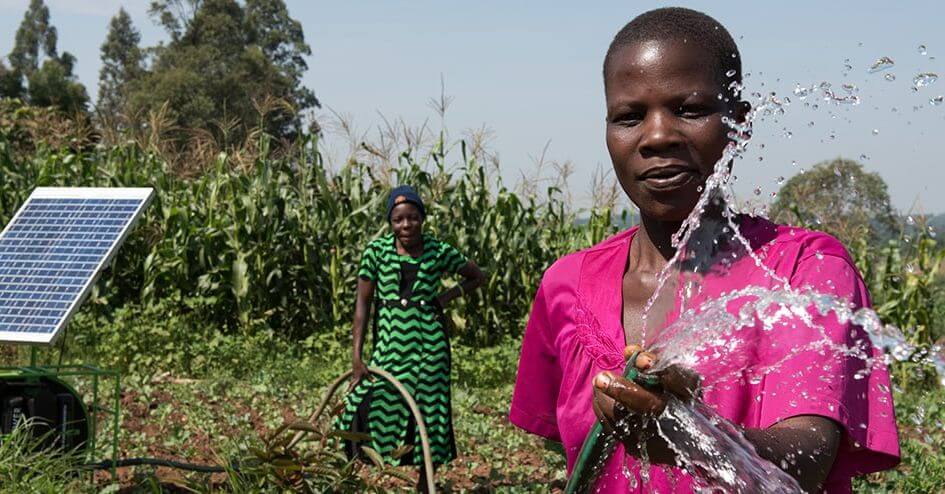Chances are that if you live in a remote part of sub-Saharan Africa or South Asia and don’t have access to electricity, you also don’t have access to clean water. That’s hundreds of millions of people. Yet to date, there has been far too little collaboration between groups advocating for universal access to clean water (Sustainable Development Goal 6)—like the famous Mr. Damon and his Water.org—and those seeking to end energy poverty (Sustainable Development Goal 7)—like PowerforAll.org and its partners.
As we approach World Water Day in March, and as as the international development community focuses its high-level political dialogue in 2018 on SDGs 6 & 7, now is the right time to bridge the gap between energy and water.
As seen in a new Power for All fact sheet, distributed renewables, in the form of green mini-grids and standalone solar systems, are already showing that they can be of huge help in delivering drinking water.
In India, for example, the company Grassroots and Rural Innovative Development (GRID) is showing that it can reliably supply affordable drinking water to rural villages by combining solar mini-grids and reverse osmosis (RO) filtration technology. Its first plant can run 10–15 hours a day, supplying 1,000 homes by producing 2,000 liters of drinking water every hour at the cost of $0.002/liter. Real-time water quality — level of total dissolved solids (TDS) — is displayed publicly to ensure community transparency. The plant also employs 5 local people.
For a country like India where 138 million rural households have no access to treated drinking water, this type of solution is breaking new ground. It also offers a window into what is possible: using distributed renewable energy to address water and energy poverty in an integrated way. GRID’s first project is only supplying water, but it plans for its next plant to be dual purpose—clean water and clean electricity to a rural community.
Other companies, like Off Grid Box, are also delivering both clean energy and water through a pre-fab solution, while R&D efforts continue to push what’s possible, including using standalone solar to desalinate salt water.
Meanwhile, other innovations are emerging that seek to leverage the distributed nature of solar energy to solve lack of access to sanitation, a global problem facing billions of people that results in widespread open defecation and spread of disease. Eram Scientific in India is hoping to scale its “e-toilet”, a self-cleaning, pre-fab stainless steel public toilet that is powered by solar.
Much has also been written about the important role that solar is playing in pumping water for irrigation, and in the process displacing expensive, polluting diesel generators. A great overview can be found in an earlier Power for All fact sheet, Decentralized Renewables: Boosting Agriculture and Improving Nutrition.
So Matt, have your people call our people. Water and solar energy—it’s a natural partnership. In your own words, lack of access to clean water is “totally unnecessary, because its solvable, if done right and with urgency”. We’ve got community-based, market approaches using distributed renewables that are ready to scale today. Why wait?
